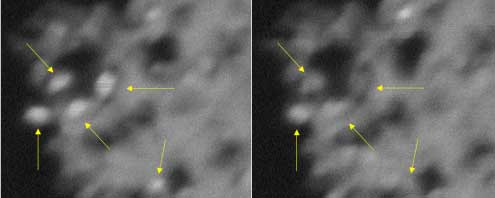Nanowerk July 16, 2020
Using polymer‐derived mesoporous carbon (PDMC) as a template, an international team of researchers (USA- State University of New Jersey, China, Czech Republic) has synthesized mesoporous titanium dioxide comprised of small, crystalline, vacancy‐rich anatase nanoparticles that show unique optical, thermal, and electronic properties. When exposed to a slow electron beam, the nanoparticles exhibit a charge/discharge behavior, lighting up and fading away for an average period of 15 s. They show a 50 nm red‐shift in their UV/Vis absorption and long‐lived charge carriers at room temperature in the dark, even long after UV irradiation. As photocatalysts they show a good activity for CO2 reduction. They could be useful for environmental cleanups, sensors, electronic devices and solar cells. The research team will further explore their capabilities…read more. TECHNICAL ARTICLE

The arrows point to titanium dioxide nanocrystals lighting up and blinking (left) and then fading (right). Credit: Tewodros Asefa and Eliska Mikmekova